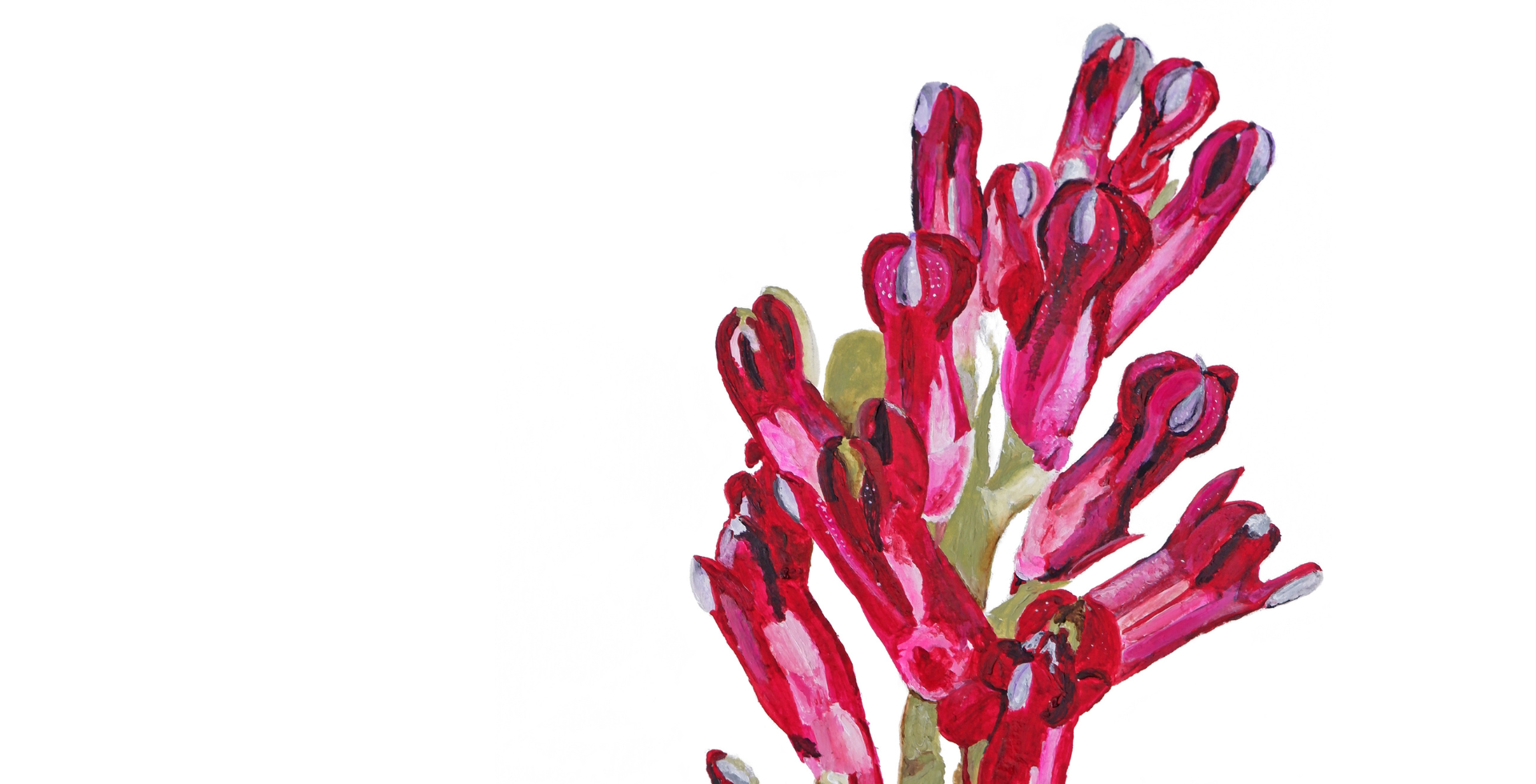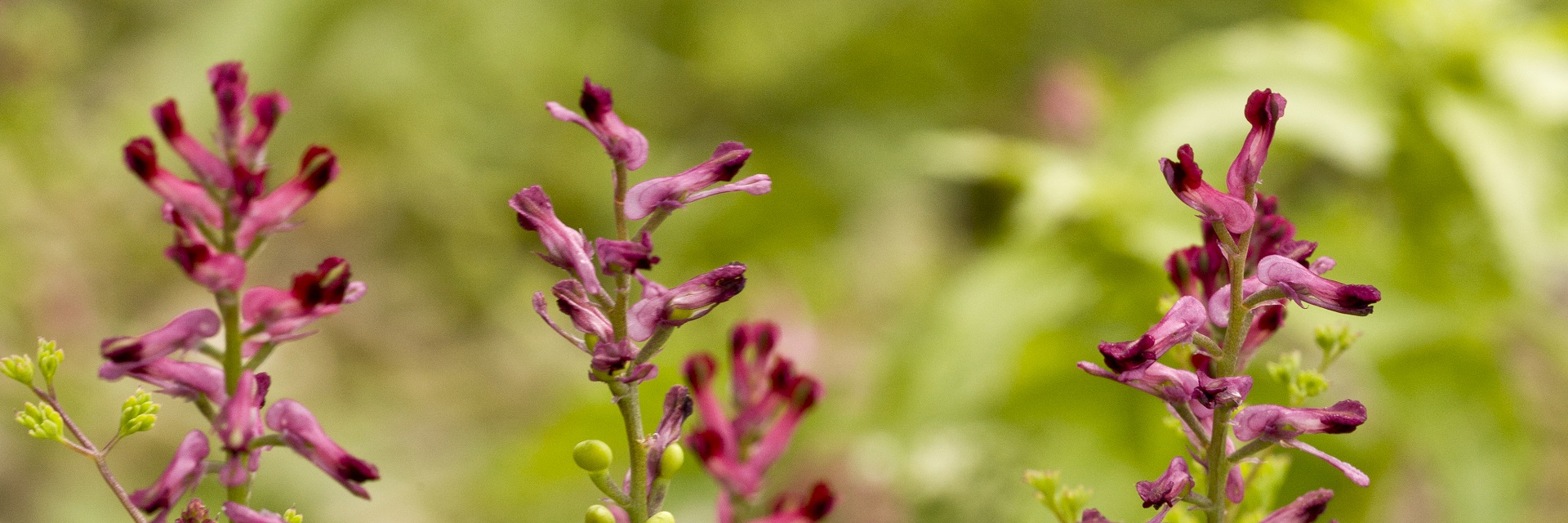What is the Common Fumitory?
Also known as Beggary and God’s Fingers and Thumbs, this is a greyish-green leaved plant with elongated, crimson-tipped pinkish-purple flowers about 1 cm long with a distinctive spur that appear from April to October in well-managed arable margins. It has a scrambling growth habit that can be quite dense with the spur giving the flower a ‘heel’ type of feature with the flower stalk appearing to join part way along the flowerhead. There can be from 20 -60 flowers on each on each stem.
Historically, it has been used for medicinal purposes and was used to treat conjunctivitis and skin diseases and to cleanse the kidneys. However, it also has the potential to be poisonous.
It is also a source of fumaric acid (along with many other fruits and vegetables) which is used as a food additive, mainly as an acidity regulator or flavouring agent.
Why is the Common Fumitory important to the Surrey Hills?
It favours well-drained, disturbed and bare soils and can be found in arable fields where, in common with many other arable plants, is most likely to be found around the edges and in the corners of the cropped area. It can also be found on waste ground in the wider countryside.
Common Fumitory is not considered to be a vulnerable species and can be found on both chalky and sandy soils, so could be found across the range of soil types within the Surrey Hills AONB.


